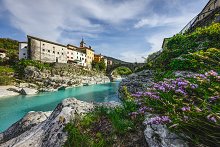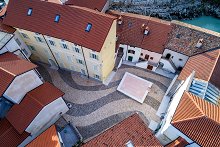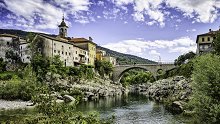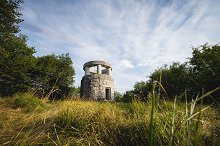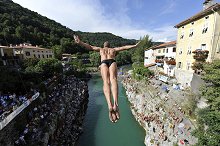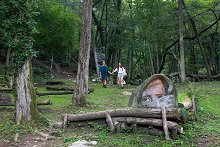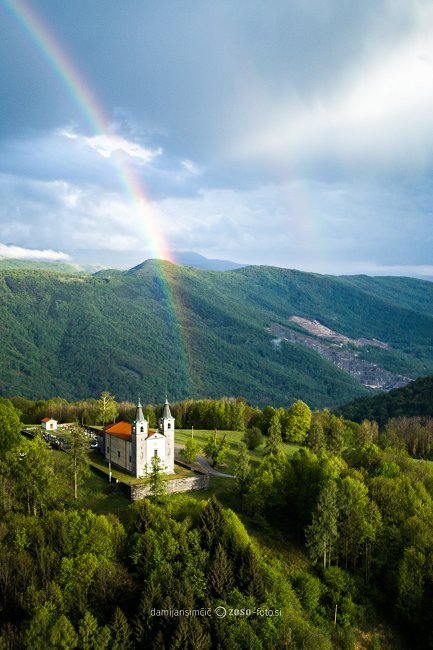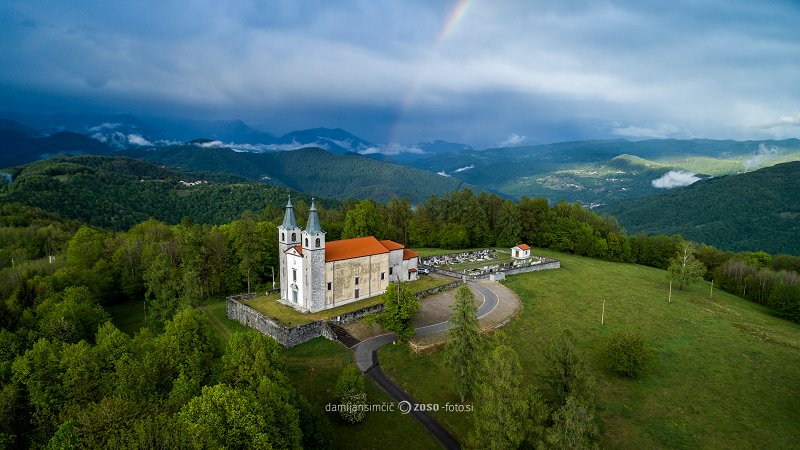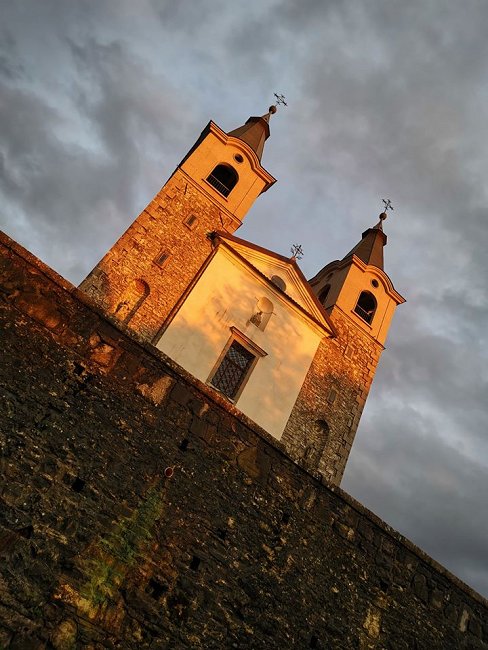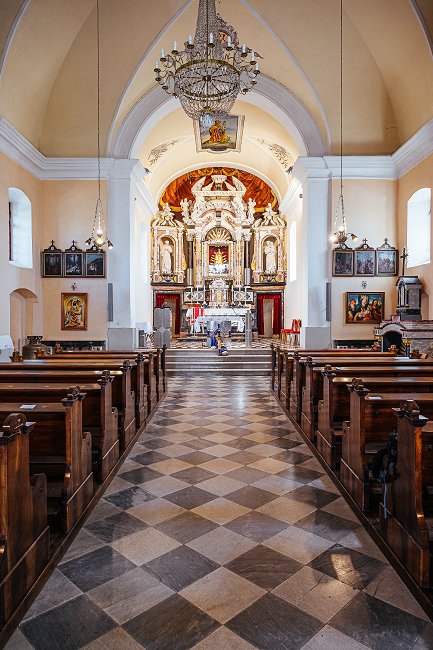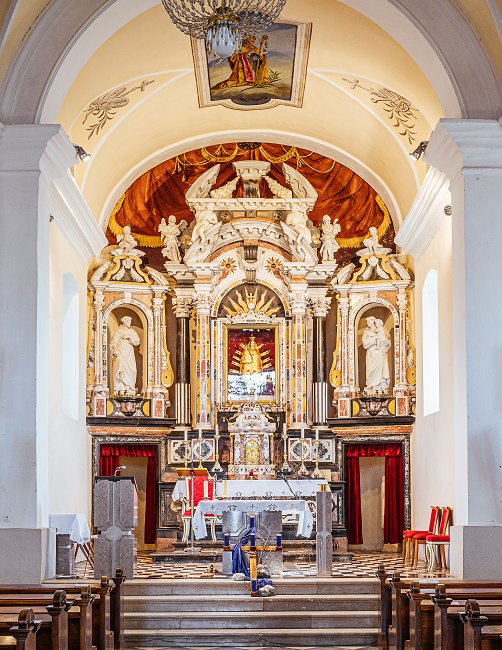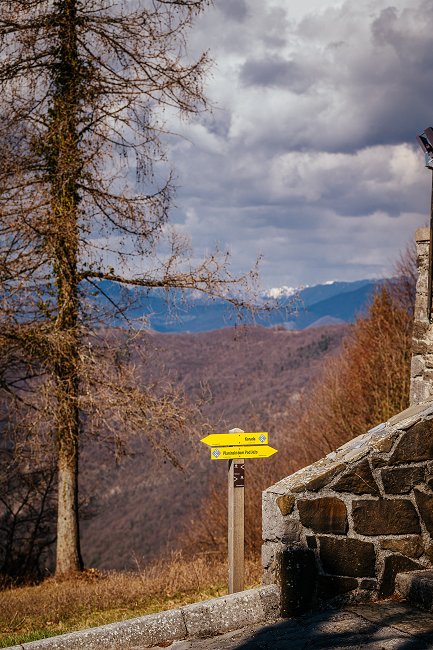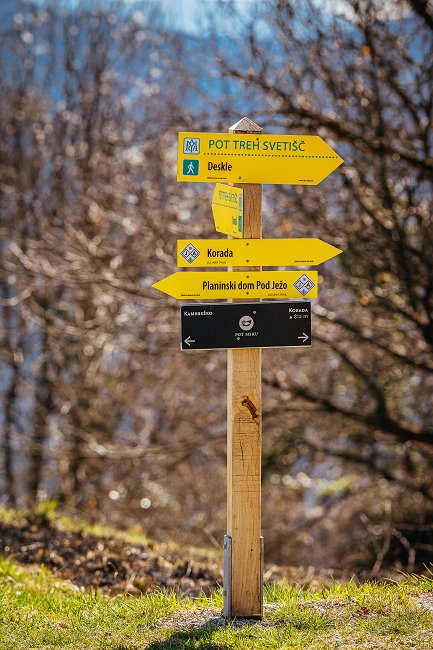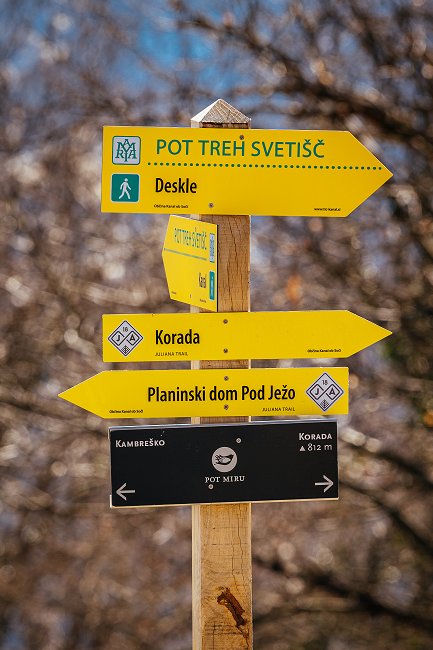The Marijino Celje Temple
In the past, the temple was mentioned for the first time in 1325 with the name “De S. Zenone de supra Judrium,” and afterwards, in 1344 it was named “Sancti Zenonis in Sclauonibus. Judging from its characteristics, i.e. from arched presbytery and a bell with a date 1575, it is regarded as the second Saint Zenon Church in late Gothic style, which was built in the 16th century. Up until 1757, when it became vicariate church, the Saint Zenon Church was a subsidiary church of the old parish church in Kanal. After 1761, when the symbol of the merciful saint, i.e. a copy of the statue from the biggest Central European Mary Temple in the Austrian Styria, was transferred, the Maria Zell Church became a pilgrimage church.
In the second half of the 18th century, the church was renovated. It was built a characteristic dominating landscape feature with two bell towers ornamented with tin endings, such as those you can find in Goriška Brda and in the Natisone Valley. In 1825, the right bell tower was demolished, and in 1997, both bell towers were again renovated. The altar of this day was built in 1847, while the main altar is thought to be constructed during Pacassi’s workshop, i.e. in 1686. After having been used for 100 years in Sveta Gora, in the time of Joseph II in 1786, it was transferred to the Marijino Celje Church. During the periods between 1786 and 1793, and between 1915 and 1928, in the time of its devastation, Marijino Celje took over the pilgrimage role of Sveta Gora.
Frescoes of Saint Florian, Saint Anthony the Abbot, Saint Anthony Padovano, Saint Valentin and Stations of the Cross, dating back to 1849, were produced by the painter Antonio Dugoni from Cividale. Anna’s image in the left lateral altar was produced by Raffael Pich from Gorica in 1837. The aisle ceiling, painted in 1926 and 1927, and Saint-Zenon’s painting were produced by Leopold Perc from Lucinico. Four evangelists on the aisle ceiling and the Ascension on the right lateral altar is thought to be painted by Clemente de Neri.
Foto: Damijan Simčič, Primož Kožuh
Take a look at a panorama of the surroundings.
